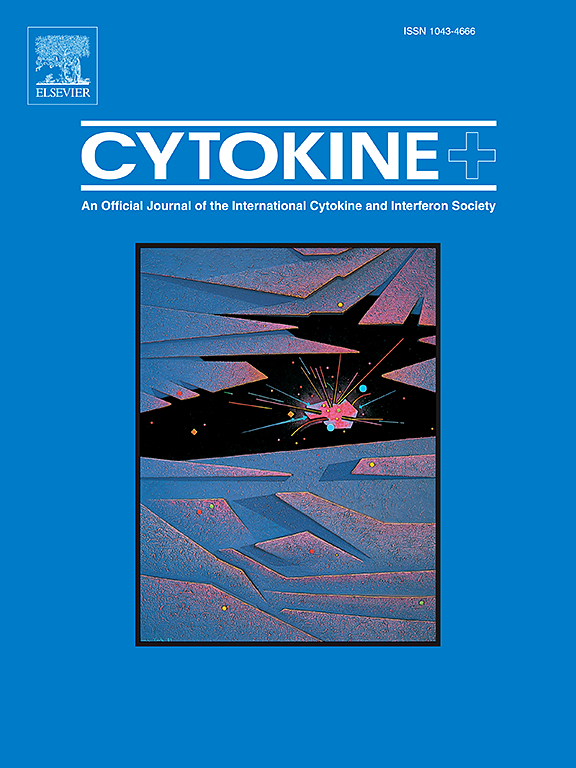丁酸钠对egfr -膜联蛋白A2协同作用的促炎调节:减少类风湿关节炎关节炎症和软骨破坏的上游靶点
IF 3.7
3区 医学
Q2 BIOCHEMISTRY & MOLECULAR BIOLOGY
引用次数: 0
摘要
类风湿性关节炎(RA)是一种衰弱性自身免疫性疾病,其特征是持续的关节炎症和关节损伤。我们之前的研究发现表皮生长因子受体(EGFR)和膜联蛋白A2 (AnxA2)之间存在促炎相互作用,而在RA发病过程中,膜联蛋白A1 (AnxA1)下调会加剧这种相互作用。本研究阐明了丁酸钠(一种肠道微生物衍生的短链脂肪酸)在破坏EGFR-AnxA2轴和恢复AnxA1稳态方面的免疫调节潜力。通过体外-体内综合研究,我们发现丁酸钠可降低原发性RA滑膜成纤维细胞中EGFR和AnxA2的表达,同时上调AnxA1并减少TNF-α的释放。在体内,使用胶原诱导的关节炎(CIA)小鼠模型,组织病理学和分子分析显示,丁酸钠处理的小鼠表现出滑膜增生明显减弱,pannus形成减少,AnxA1表达升高,最终导致EGFR-AnxA2串扰中断。此外,x线计算机断层扫描证实关节结构明显保留,溶骨性病变减少,关节间隙狭窄,尤其是在胫骨和跟骨。这些发现强调了丁酸钠作为EGFR-AnxA2复合物调节剂的潜力,通过诱导AnxA1恢复抗炎稳态,减轻ra介导的炎症级联反应和结构恶化。本文章由计算机程序翻译,如有差异,请以英文原文为准。
Pro-inflammatory regulation of EGFR-Annexin A2 synergy by sodium butyrate: An upstream target to reduce articular inflammation and cartilage destruction in rheumatoid arthritis
Rheumatoid arthritis (RA) is a debilitating autoimmune disease characterized by persistent articular inflammation and joint damage. Our prior research identified a pro-inflammatory interplay between the epidermal growth factor receptor (EGFR) and Annexin A2 (AnxA2), which is exacerbated by Annexin A1 (AnxA1) downregulation in RA pathogenesis. The present study elucidates the immunomodulatory potential of sodium butyrate, a gut microbiota-derived short-chain fatty acid, in disrupting the EGFR-AnxA2 axis and restoring AnxA1 homeostasis. Employing an integrative in vitro–in vivo paradigm, we establish that sodium butyrate attenuates EGFR and AnxA2 expression in primary human RA synovial fibroblasts, concomitantly upregulating AnxA1 and diminishing TNF-α release. In vivo, using a collagen-induced arthritis (CIA) murine model, histopathological and molecular analysis reveal that sodium butyrate-treated mice exhibit significantly attenuated synovial hyperplasia, reduced pannus formation, and elevated AnxA1 expression, culminating in a disruption of EGFR-AnxA2 crosstalk. Furthermore, X-ray computed tomography substantiates a marked preservation of joint architecture, with diminished osteolytic lesions and joint space narrowing, notably in the tibia and calcaneum. These findings underscore sodium butyrate's potential as regulator of EGFR-AnxA2 complex modulator that reinstates anti-inflammatory homeostasis through AnxA1 induction, attenuating RA-mediated inflammatory cascades and structural deterioration.
求助全文
通过发布文献求助,成功后即可免费获取论文全文。
去求助
来源期刊

Cytokine
医学-免疫学
CiteScore
7.60
自引率
2.60%
发文量
262
审稿时长
48 days
期刊介绍:
The journal Cytokine has an open access mirror journal Cytokine: X, sharing the same aims and scope, editorial team, submission system and rigorous peer review.
* Devoted exclusively to the study of the molecular biology, genetics, biochemistry, immunology, genome-wide association studies, pathobiology, diagnostic and clinical applications of all known interleukins, hematopoietic factors, growth factors, cytotoxins, interferons, new cytokines, and chemokines, Cytokine provides comprehensive coverage of cytokines and their mechanisms of actions, 12 times a year by publishing original high quality refereed scientific papers from prominent investigators in both the academic and industrial sectors.
We will publish 3 major types of manuscripts:
1) Original manuscripts describing research results.
2) Basic and clinical reviews describing cytokine actions and regulation.
3) Short commentaries/perspectives on recently published aspects of cytokines, pathogenesis and clinical results.
 求助内容:
求助内容: 应助结果提醒方式:
应助结果提醒方式:


